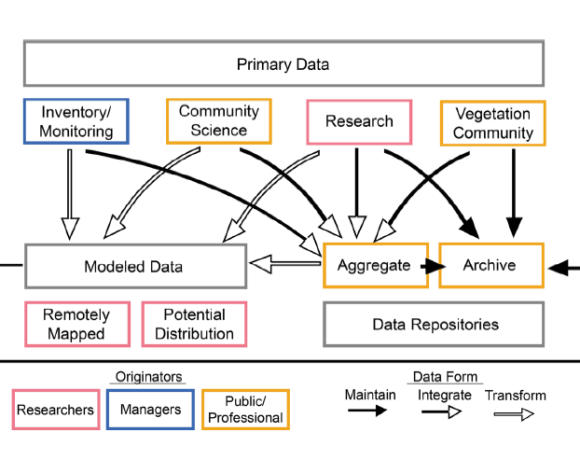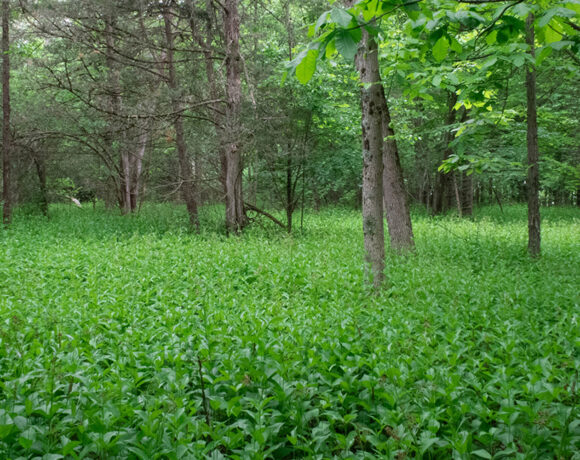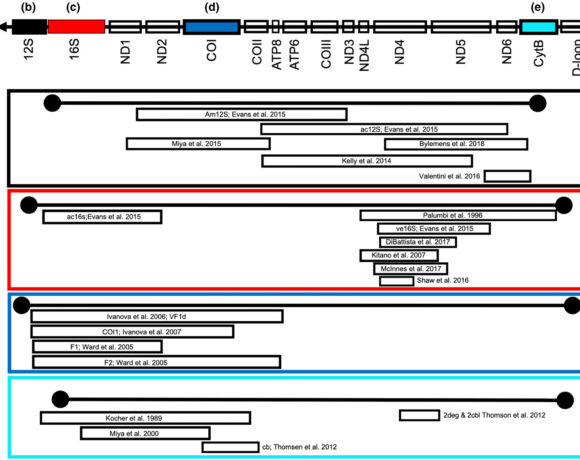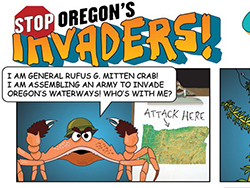Removing One Invasive Species Makes Room for Another
In this research summary, we summarize a paper looking at what happens to plant communities after invasive species are removed:
Torres, A., Morán‐López, T., Rodriguez‐Cabal, M.A. and Núñez, M.A., 2023. Timing of invasive species removal influences nonnative biotic resistance and trajectories of community reassembly. Journal of Ecology. https://doi.org/10.1111/1365-2745.14168
Summary written by Eva Colberg, edited by Audrey Bowe
Summary
What fills the empty space after an invasive species is removed? New research from the Patagonia region of Argentina shows that the answer depends on the species removed, interactions with other species in the community, and the timing of removal. To better understand community assembly after invasive species removal, Agostina Torres and colleagues conducted removal experiments with two invasive shrub species. In both greenhouse and field experiments, the researchers manually removed all above-ground parts of sweetbriar rose (Rosa rubiginosa) or the co-occurring Scotch broom (Cytisus scoparius) early or late in the growing season. After removing the rose or Scotch broom, they measured the abundance of the other invasive shrub as well as other native and nonnative species. The removal of invasive shrubs led to increases in nonnative species or reductions in native species, but exact outcomes depended on species and timing of removal. Specifically, Scotch broom increased with early removal of the rose in field experiments and with both early and late rose removal in greenhouse mesocosms, suggesting competition with the rose actually helped prevent broom dominance (“nonnative biotic resistance”). Scotch broom removal did not affect rose abundance, but resulted in an average 55–65% increase in nonnative cover alongside a 45% decrease in native cover. To a lesser extent, rose removal also negatively impacted the surrounding native community, and more so with early compared to late removal, possibly as a byproduct of increased broom cover.
Key Take-aways
- Removal of two different shrub species negatively affected native plant community recovery by facilitating other nonnative species or decreasing native abundance.
- Competitive interactions between different invasive species may prevent dominance (“nonnative biotic resistance”), such that the removal of one can benefit the other.
- Sweetbriar rose removal, especially early in the growing season, benefitted Scotch broom, suggesting the rose contributed to nonnative biotic resistance by competing with the broom.
Management Implications
- Interspecific interactions can impede the recovery of native communities after invasive shrub removal. Removal of both species in this study negatively impacted native vegetation, demonstrating potential unintended consequences of invasive species removal.
- Removing one invasive competitor could benefit other invasive species, such as the boom of Scotch broom after sweetbriar rose removal.
- Timing of removal can also affect outcomes; in this study, late-season removal of Scotch broom had fewer effects on non-target species compared to early-season removal.
- The nitrogen-fixing Scotch broom (Cytisus scoparius) is listed as a Tier 2 invasive by the Western NY and Lower Hudson PRISMs, so this research could specifically help predict the outcomes of its interactions and spread.
- Invasive species control in areas where Scotch broom co-occurs should be on the lookout for Scotch broom, and consider whether control later in the growing season might be possible.













